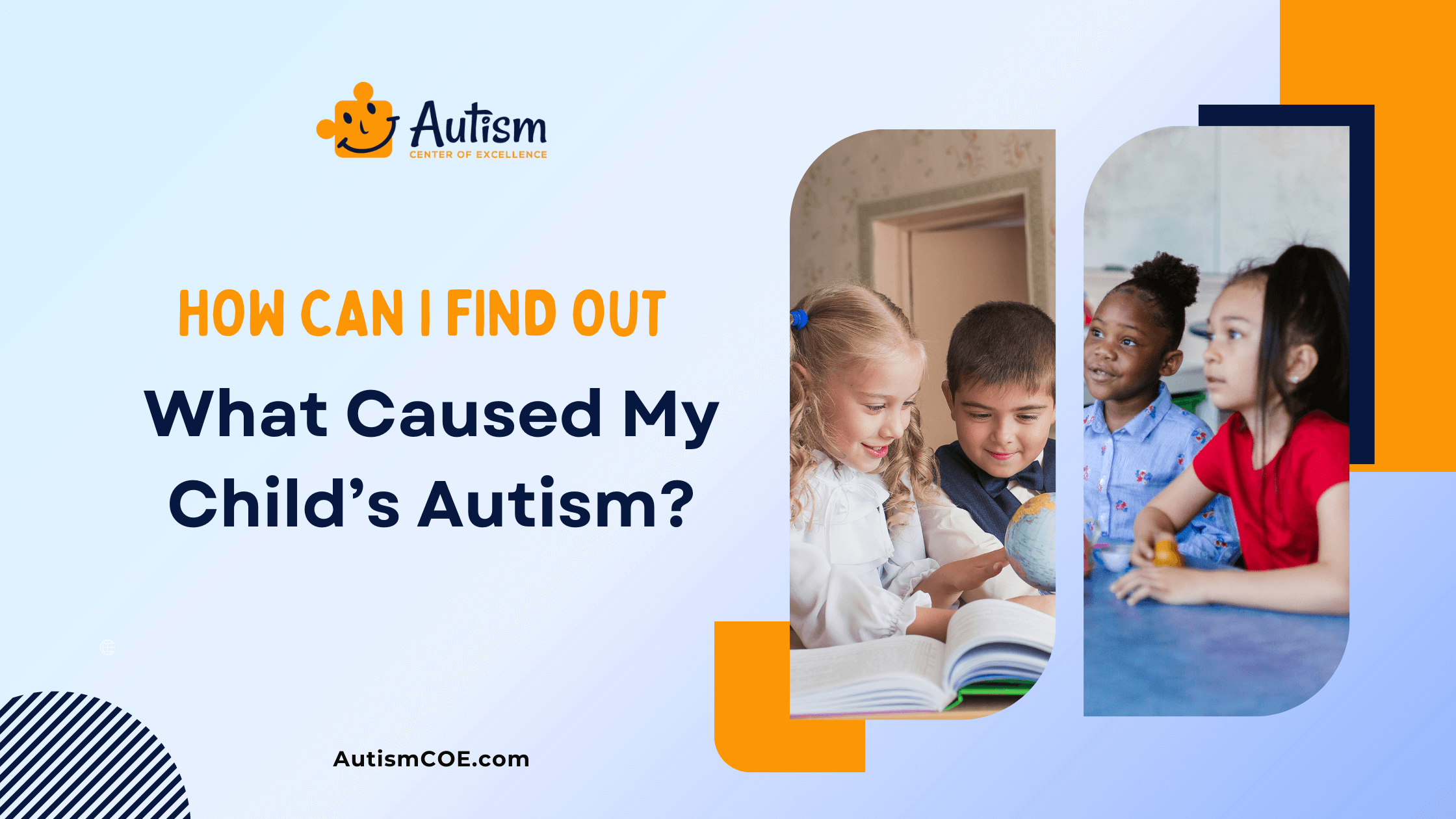The diagnosis of Autism Spectrum Disorder (ASD), for sure, is a very significant moment in the life of any family. With among others the many unanswered questions and the long list of probable concerns, this particular query rises to the center of everyone’s mind and so a doubt may occur: “What caused my child’s autism?” This single question, in particular, can be ruinous and extremely tedious. Yet, very often, the key elements of autism are so complex that reversing a simple medical test or having a set of behaviors is not enough to determine what causes of Autism.
The thing is that autism is not a single, exactly defined, for example, condition, but displays a wide range of very different consequences relating to the things called the disorders, which involve brain development, and the symptoms can range from mild to severe. Various factors during pregnancy can increase a child’s risk of developing autism spectrum disorder (ASD). The broad diverse category of Autism Spectrum Disorder ranges from autistic disorder, Asperger syndrome, and pervasive developmental disability that is not otherwise specified. The number of children with ASD is climbing fast. The report from the CDC shows that there are close to 1 per 54 children suffering from ASD in the U.S.
Understanding Autism Spectrum Disorder
Autism Spectrum Disorder (ASD) is a brain disorder that affects communication, social interaction and behaviour. It’s characterised by difficulties with verbal and non verbal communication, social interaction and repetitive behaviours. ASD is a spectrum disorder which means it affects people to varying degrees and in different ways.
Research suggests that both genetic and environmental factors contribute to the development of ASD. Genetic factors like mutations in certain genes can increase the risk of ASD. Environmental factors like pesticides and maternal obesity may also play a role in ASD. These factors can impact early brain development and result in the diverse expressions of the disorder.
Knowing ASD is key to providing support and treatment. By knowing the signs and symptoms of ASD individuals can get early diagnosis and intervention which can make a big difference to their lives. Early intervention can address developmental delays and provide strategies for communication, social skills and adaptive behaviours.
Genetic Influences on Autism
Genes are the biggest factor in autism. It’s been shown that when you look at individuals with certain genetic conditions like Fragile X or Rett’s syndrome, they are more likely to have autism. Family studies have also shown that autism is an inherited trait so you can inherit it from previous generations. But it’s also worth noting that not all individuals with genetic predisposition to autism will develop the condition.
It’s well known that there’s a family link to autism with a higher chance of the condition in families with a history of ASD. To understand how genetics plays a part in autism let’s peel back the layers of our genetic code and look at specific factors that might contribute.
Understanding genetic predisposition to autism is a complex landscape. Families with one child diagnosed with ASD will wonder about the risk for subsequent children. Studies show the chance of ASD in siblings is higher than the general population so there must be a genetic component.
Also scientists have been able to identify specific genetic mutations and multiple combinations which can increase the risk of autism. These differences can affect the functioning of certain genes that are involved in the development of brain connections between brain cells. But remember, there isn’t one gene for autism. It’s not one specific gene but the overall genetic picture between the genes and their interactions that increases the risk.
Environmental Factors in Autism Development
Whilst genetics forms the base, the next part of our research into the foundation of autistic spectrum disorders is to look into the impacts that environmental causes of Autism have. Besides the role of genetics, what occurs in the environment during important stages of development impacts the appearance of autism in children as well.
Researchers have narrowed down the field to the prenatal factors, looking into the relationship between the occurrence of events during pregnancy and autism risk. These may include the mother’s health condition, exposure to certain medications, and complications during pregnancy, all of which turn into the lenses through which this issue is viewed. One of the issues yet to be clarified is whether there are effects of environmental toxins, such as air pollution and specific chemicals, on pregnancy, contributing as potential causes of Autism.
Then, turning to the perinatal period, covering the time around birth, it is also recognized as another essential window of opportunity for the environmental factors. Researchers find birth complications, premature birth, and low birth weight to be associated with a higher risk of autism, suggesting these as possible causes of Autism.
However, we must handle the problem of studying environmental causes with caution. The impact of the environment doesn’t have the same effect on everyone with autism and definitely doesn’t mean that every child exposed to certain factors will end up with the disorder. The genetics and environment correlation brings an extra dimension to our theory of everything.
We will now take a deeper look into autism’s complex origins by examining how genetic predispositions and environmental triggers interact, thereby trying to establish the fine balance that leads to autism in children and better understand the causes of Autism.
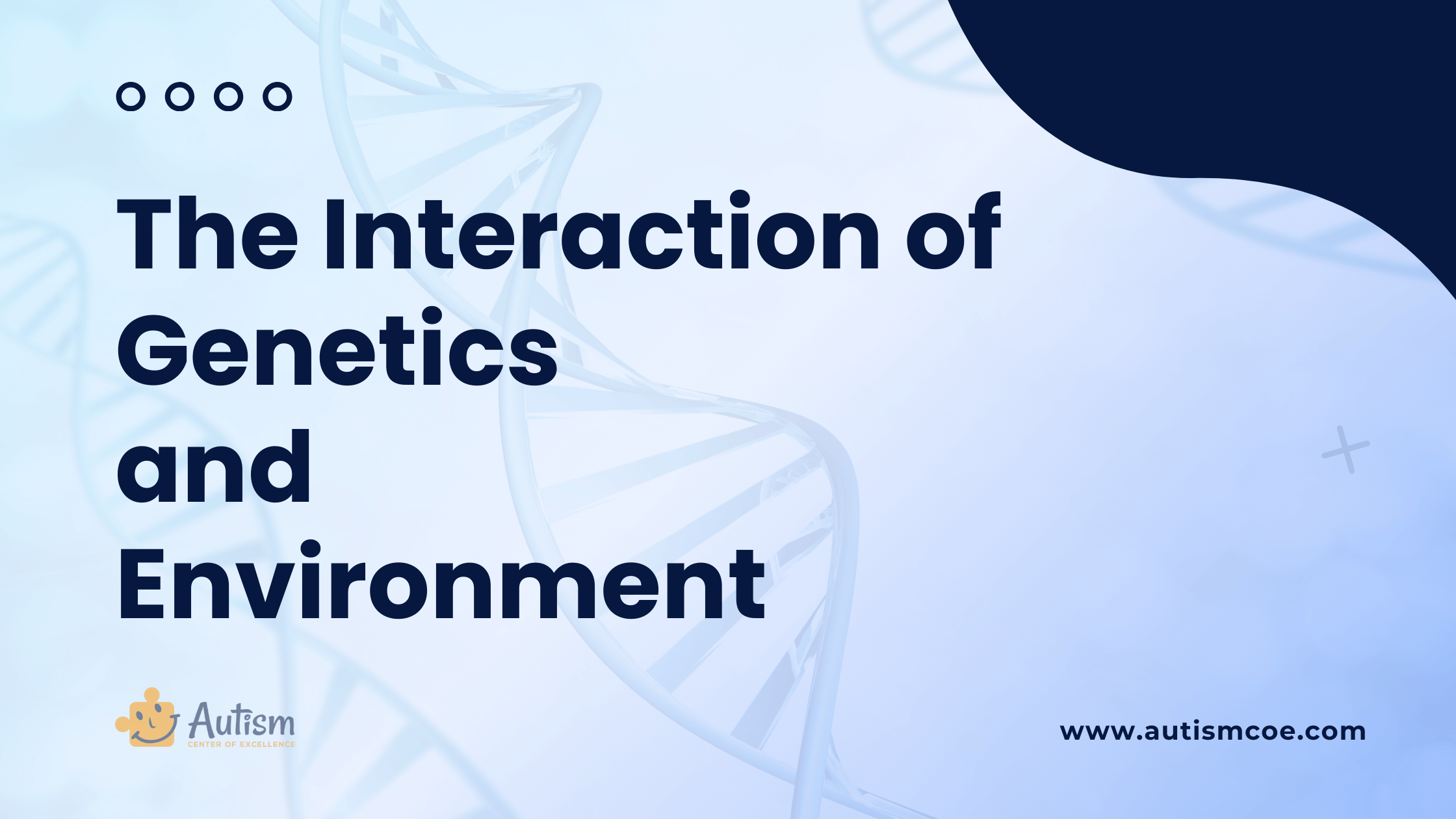
The Interaction of Genetics and Environment
Autism roots are like dances where genes twirl with the environment. Genetics establishes the basis, but it’s the various environmental factors that add the nuances to the complexity of autism development. Understanding the interaction of genetic predispositions and environmental risk factors is crucial for parents seeking answers.

Understanding the Genetic Landscape:
Genes play a big part in autism. Studies highlight specific variations and mutations that might make someone more likely to have the disorder. Families with a history of ASD often grapple with the idea that certain genetic factors could influence the chances of autism in future generations.
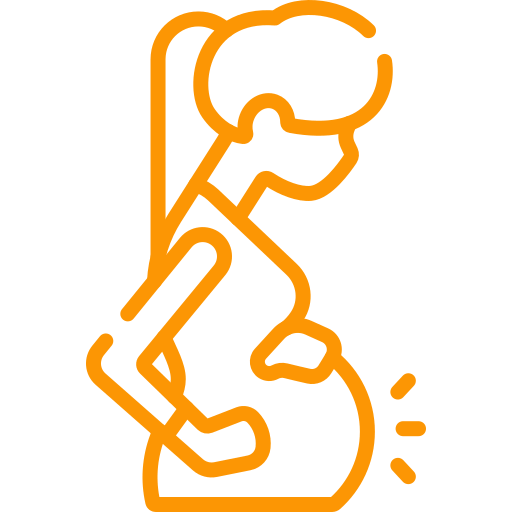
Environmental Triggers:
The environment, especially during important times of development, brings in a mix of factors that can either amplify or lessen genetic influences. Things like prenatal complications, exposure to toxins, or the mother’s health become key players in how causes of Autism show up.
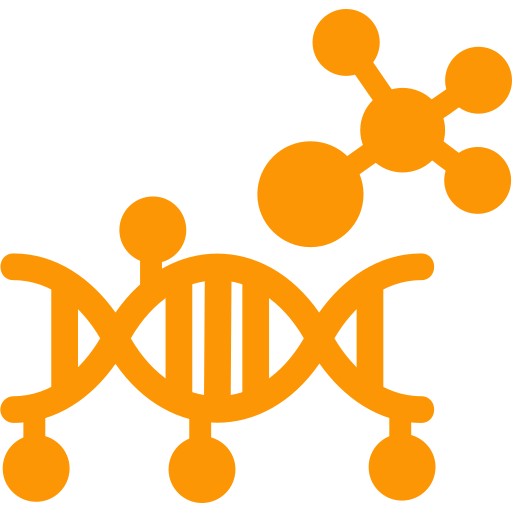
Complex Interactions at Play:
The relationship between genes and the environment isn’t straightforward. Different genetic variations may react in different ways to environmental triggers, creating a spectrum of presentations within ASD. Understanding this complexity is vital for parents seeking answers, highlighting the uniqueness of each child’s journey with autism.
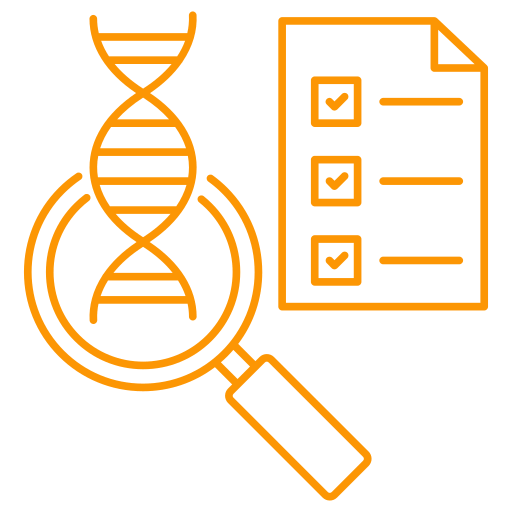
Identifying Environmental Influences:
Spotting environmental influences means looking closely at factors during pregnancy and early development. The Centers for Disease Control and Prevention (CDC) provides statistical data on autism incidence and emphasizes the importance of disease control in public health. From the air a mother breathes to the things she encounters, these elements subtly shape a child’s neurodevelopment, especially if there’s a genetic predisposition to autism, contributing to the causes of Autism.
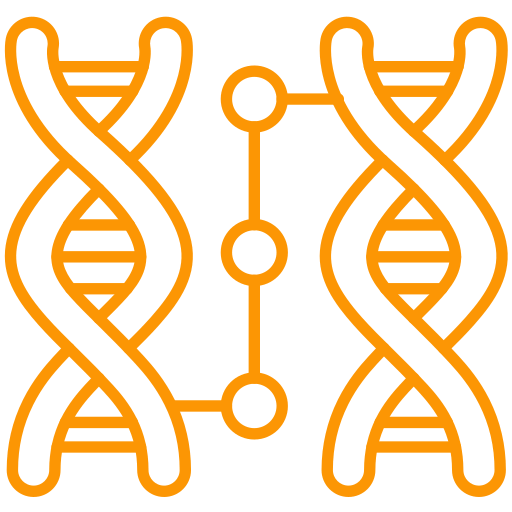
The Role of Epigenetics:
Along with epigenetics, the study of changes in gene function which are different from changing the DNA sequence, adds a further dimension to this secret. The Diagnostic and Statistical Manual of Mental Disorders (DSM-5) has influenced the criteria for diagnosing autism, contributing to an increase in reported cases. The environmental side can lead to epigenetic changes that may allow for gene functioning to differ and, thereby, shape the way in which ASD is expressed, adding another layer to the causes of Autism.
The key to that knowledge of the cause of autism in children is to tread the maze of genetics and the surroundings of it. Thus this demands all-around attention, as each child has her/his own peculiarities that dominate the developmental process.
As parents seek answers, this exploration into the interaction of genetics and the environment provides valuable insights, paving the way for informed decisions, personalized interventions, and a deeper understanding of their child’s autism journey.
Early Signs and Observations
The journey to understand what might be behind your child’s autism often starts with careful observations and noticing potential signs. As a parent, being aware of these early indicators is crucial for timely support.
➡️ Recognizing Potential Indicators:
You, as a parent, are the best observer of your child’s behavior. Early signs can vary but may include delays in speech, limited social interactions, repetitive behaviors, or struggles in nonverbal communication. These could point towards potential causes of Autism.
➡️ Speech and Language Development:
Keep an eye on your child’s speech milestones. If there are delays, like not babbling by 12 months or not saying single words by 16-18 months, it could be an early indicator. Difficulty in using gestures or understanding language may also be a signal tied to the causes of Autism.
➡️ Social Interactions:
Watch how your child interacts within the family and in social settings. Limited interest in peers, trouble making eye contact, or challenges in imaginative play might hint at social difficulties linked to autism and its possible causes of Autism.
➡️ Repetitive Behaviors:
Take note of repetitive behaviors or intense focus on specific activities. Unusual hand movements, repetitive body motions, or being fixated on routines could suggest autism, which might relate to various causes of Autism.
➡️ Nonverbal Communication Challenges:
Troubles in understanding or using nonverbal cues, like facial expressions or gestures, could be early signs. A lack of responsiveness to social cues or difficulty maintaining eye contact might be noticeable and contribute to understanding the causes of Autism.
➡️ Encouraging Investigations:
Early signs are not meant to cause alarm but to empower parents to seek professional investigations. If you spot these potential indicators, consider consulting with healthcare professionals, like pediatricians or developmental specialists, for evaluations that may uncover underlying causes of Autism.
Understanding what might be behind your child’s autism is a journey that often starts with a parent’s keen observations. By being vigilant and proactive, you empower yourself to seek timely support, laying the foundation for a comprehensive understanding of your child’s unique needs. Remember, you’re not alone on this journey – a network of healthcare professionals and support communities is ready to guide you every step of the way.
Join Our Weekly Newsletters!
Subscribe now to stay updated with our latest email updates.
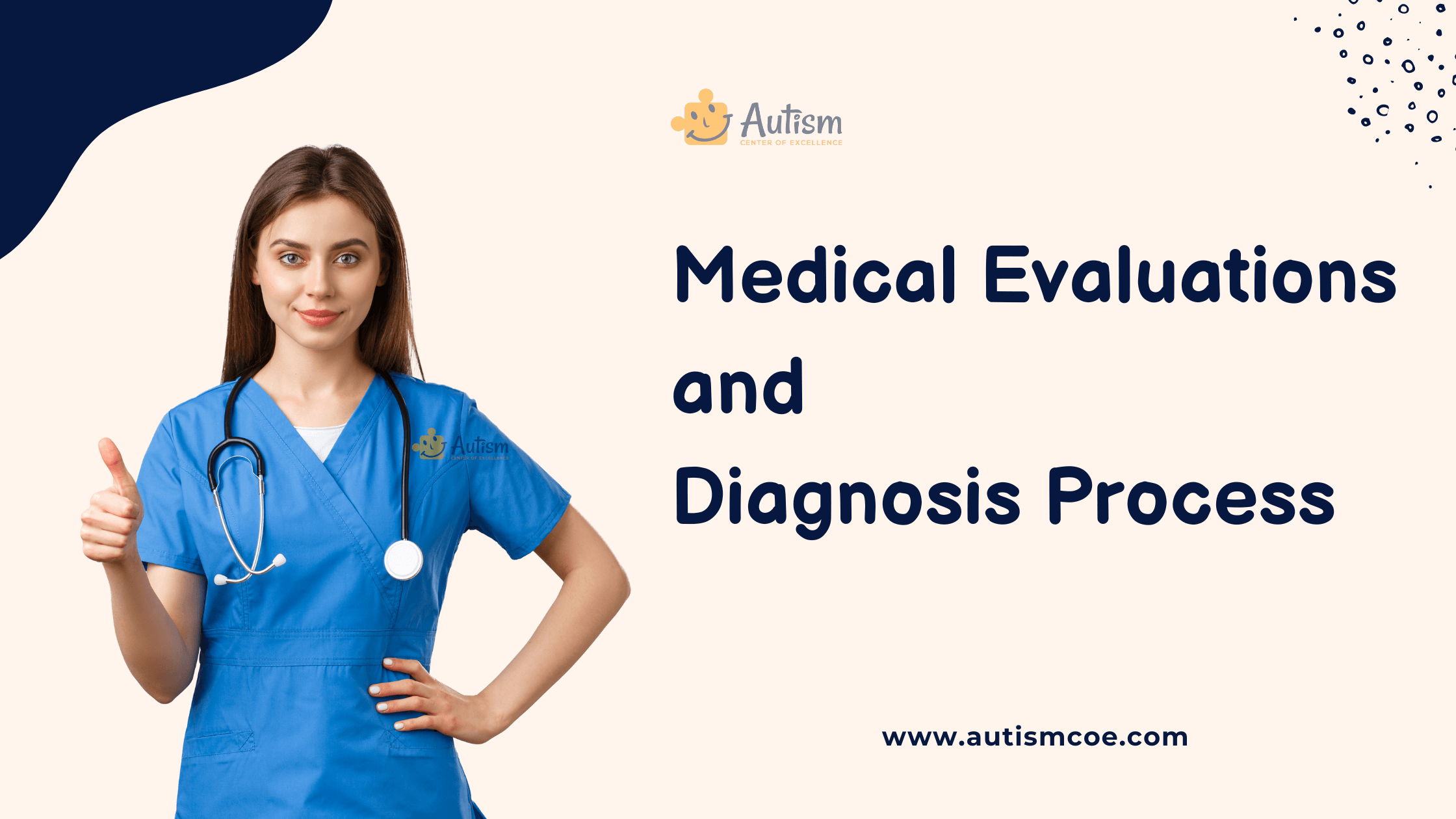
Medical Evaluations and Diagnosis Process
It can be rather frightening and complex for parents of a child who might be autistic as their path goes through many medical examinations and the diagnostic process. The Diagnostic and Statistical Manual of Mental Disorders (DSM-5) provides the criteria for diagnosing autism. The goal of the forthcoming chapter is to clarify the selection procedure and show the applicability of the assistance you can get from specialists.
✅ Guidance for Parents:
The initial step in your health assessment is to recommend medical professionals to evaluate you. In your role as a parent, the responsibility to figure out by yourself the individual manifestations of behaviors or developmental behavior patterns that then should be followed by a more detailed investigation is placed upon you. Understanding the potential causes of Autism will guide you in these observations.
✅ Importance of a Multidisciplinary Approach:
Such an understanding of your autism must be based on a team approach with all team members contributing their parts. Via health care professionals to define and supervise the developmental aspect of your child’s life. The healthcare team might consist of pediatricians, neurologists, psychologists, and occupational therapists too, each providing insights into the causes of Autism.
✅ Diagnostic Process and Components:
The diagnostic procedure is very thorough; hence, it may include behavioral assessments, a review of the developmental history, communication and social traits, and cognitive testing. Every step builds a well-rounded view of your child’s specialties and weaknesses, shedding light on the underlying causes of Autism.
✅ Understanding the Role of Different Professionals:
- Pediatricians: They, in general, are active in the first stage and send you for further expert diagnoses.
- Neurologists: For example, if neurologists are specialized in understanding the nervous system, they might need to rule out other non-neurological conditions.
- Psychologists: As behavior and mental process experts, psychologists perform behavioral appraisals, helping to understand if the behavior aligns with known causes of Autism.
- Occupational Therapists: Estimate sensory processing and motor coordination and provide support with handling daily activities. This process will involve sensory assessment, occupational and physiotherapy services, and compensatory strategies through adaptive equipment.
✅ Empowering Parents through Knowledge:
The involvement of parents in the diagnosis course allows them to have sound judgment for the choices they make regarding their child. Go ahead and try to discuss the issue and work with healthcare providers to find answers. Notice that the goal is to achieve the change of the planet together, and it is highly dependent on your participation. Understanding the causes of Autism empowers you to seek the best support for your child.
There is no better start to such a journey than medical assessments that lead to the diagnosis process. This team-oriented method gives a thorough understanding of the problem to lay the way for the development of relevant programs for improving the situation. It is not just about making the diagnosis but what sets apart a good vs. a bad doctor is also in ensuring that you equip parents with knowledge and resources that will best enable them to care for their child on the autistic spectrum and understand the causes of Autism.
Staying Informed and Involved
Staying informed and involved is crucial for individuals with Autism Spectrum Disorder (ASD) and their families. By staying up-to-date on the latest research, treatments, and support services, individuals with ASD can receive the best possible care and support. Here are some ways to stay informed and involved:
- Attend Conferences and Workshops on ASD: Participating in conferences and workshops can provide valuable insights into the latest research and best practices in ASD care. These events offer opportunities to learn from experts and connect with other families.
- Join Online Communities and Support Groups: Online communities and support groups can provide a sense of belonging and a platform to share experiences and resources. Connecting with others who understand the challenges and triumphs of living with ASD can be incredibly supportive.
- Participate in Research Studies and Clinical Trials: Involvement in research studies and clinical trials can contribute to the advancement of knowledge about ASD and potentially provide access to new treatments and interventions.
- Advocate for ASD Awareness and Acceptance: Advocacy efforts can raise awareness about ASD and promote acceptance and inclusion. Engaging in community events, sharing personal stories, and supporting ASD-related initiatives can make a positive impact.
- Collaborate with Healthcare Professionals and Educators: Working closely with healthcare professionals and educators can ensure that individuals with ASD receive personalized support and interventions. Developing individualized support plans can address specific needs and promote overall well-being.
By staying informed and involved, individuals with ASD and their families can take an active role in managing their condition and improving their quality of life. It is essential to work together with healthcare professionals, educators, and community members to create a supportive and inclusive environment for individuals with ASD.
Frequently Asked Questions & Answer
What is the Main Cause of Autism in Children?
The exact cause of autism spectrum disorder (ASD) is not fully understood, and it is likely to be influenced by a combination of genetic, neurological, and environmental factors. While specific genetic mutations and variations are associated with an increased risk, there is no single identified cause for autism.
Are You Born With Autism or is It Caused?
Autism is generally considered to have a neurodevelopmental origin, meaning that it involves differences in brain structure and function that emerge during early development. While there is a genetic predisposition, environmental factors may also play a role. Autism is not caused by parenting or external influences after birth.
Can Stress During Pregnancy Cause Autism?
The relationship between maternal stress during pregnancy and the development of autism is complex and not fully understood. While some studies suggest a potential association between maternal stress and an increased risk of autism, it’s essential to note that various factors contribute to the development of ASD. The scientific community continues to explore the intricate interplay of genetic and environmental influences.
Do Autistic Parents Have Kids?
Yes, individuals on the autism spectrum can and do have children. The likelihood of having a child with autism may be higher if one or both parents are on the spectrum due to a genetic predisposition. However, it’s important to recognize that not all children born to autistic parents will have autism, and conversely, children without autistic parents can also be diagnosed with ASD. The inheritance patterns of autism are complex and influenced by a combination of genetic and environmental factors.
Conclusion
The exploration into what causes a child’s autism starts with keen observations and professional evaluations. Early signs become guiding lights, leading parents through a multidisciplinary diagnostic process involving experts from various fields. This collaborative effort not only reveals a diagnosis but equips parents with knowledge, paving the way for personalized interventions and steadfast support for their unique child.
Beyond the quest for understanding the causes of Autism, there’s an opportunity to celebrate neurodiversity – embracing the richness of each individual on the autism spectrum. With resilience, empathy, and community support, the journey transforms into a celebration, laying the foundation for a world where every child can thrive, appreciated for their distinctive strengths within the tapestry of neurodiversity.
As part of this supportive ecosystem, the Autism Center of Excellence stands ready to offer a range of services, including ABA Therapy, ABA for Early Intervention, ABA for School Readiness, Speech Therapy, and Occupational Therapy. Tailored for children aged 2 to 14, these services extend to both home and center-based environments, providing comprehensive support for families on their autism journey.
Please Note: The content of this blog is for informational purposes only and should not be considered a substitute for professional medical advice, diagnosis, or treatment. Consult a qualified health care professional for personalized guidance tailored to your specific situation.

Bhavika Bhasin
Bhavika Bhasin is the Research and Marketing officer at AutismCOE. She works with children and adults with ASD. Her clinical research includes evaluating various available autism screening and diagnosis methods and their efficacy. She is currently developing a novel screening exam that is indicated to be more accurate than the existing available exams. She is also writes articles papers for various publications.


